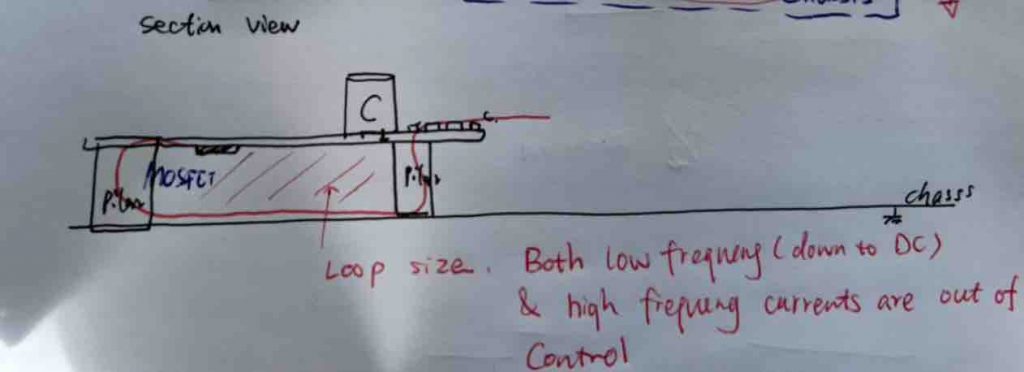Project: EMC Consulting Work on an Automotive DC-DC converter
Project Timeline: Remote Consulting for 10 working hours
Project Description:
This project is among the most challenging ones we have undertaken, and it’s due to a few key reasons. First and foremost, the remote consulting nature of EMC troubleshooting adds complexity. The testing component is pivotal, and without conducting tests firsthand, it becomes a challenge to guide others through the desired testing procedures. Secondly, the customer boasts an excellent design team, and their product fell just a few dB short of meeting the limit. Their meticulous design work focused on achieving a commendable form factor and exceptional system performance. Identifying any potential design issues within their well-crafted design proves to be an extremely demanding task.
Notes: It was diagnosed that the main issue might stem from the fact that the output return current path is not continuous. In essence, this refers to the return path for the 12V output (referred to as the “0V line”) which traverses through a PCB trace, pillar to chassis, chassis, and then back through another pillar to the PCB trace.

Using the chassis to carry the main high-output current is not ideal. I’m assuming the chassis is made of anodized aluminium. The anodizing process coats the aluminium surface with aluminium oxide, which acts as an insulator. Ground connections to aluminium chassis usually rely on star washers that pierce through the aluminium, but upon closer inspection, these connections often only make contact at the tips of the star washers. This isn’t suitable for handling high currents; it’s mainly intended for safety bonding until a fuse blows. Furthermore, if current flows through the chassis, it will create a magnetic field, and the return path will be directed through the PCB, resulting in a fairly large loop as shown on the previous page.
Regarding the pillars that connect the mounting hole to the chassis, they are most likely made of nickel-coated steel or brass. Neither of these materials is well-suited for carrying high currents and handling high-frequency signals.